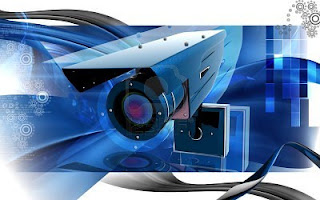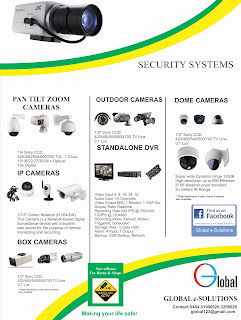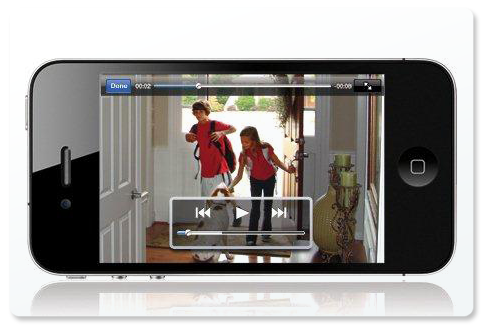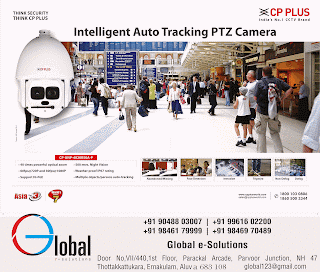Countering Domestic IEDs
 Countering Domestic IEDs
Countering Domestic IEDs
Homegrown terrorists and global threat networks are real and present a significant challenge to the United States
 Improvised explosive devices (IEDs) are no longer an overseas or war zone threat; they are an increasing threat on U.S. soil from both global and domestic terrorists. Faisal Shahzad, for example, is a Pakistani-American who pled guilty to assembling a homemade bomb that nearly exploded in a car in Times Square in 2010. Terrorists do not always have international roots. Most people are familiar with the details surrounding the Oklahoma City bombing in 1995, but other domestic terrorist bombings have occurred. Daniel Andreas from San Diego, an animal rights/eco-terrorist, has an alleged association with the Animal Liberation Brigade and was responsible for two bombings in California in 2003. Eric Rudolph considered himself a soldier in the “Army of God”, when he bombed abortion clinics and the Centennial Olympic Park during the 1996 Summer Olympics in Atlanta.
Improvised explosive devices (IEDs) are no longer an overseas or war zone threat; they are an increasing threat on U.S. soil from both global and domestic terrorists. Faisal Shahzad, for example, is a Pakistani-American who pled guilty to assembling a homemade bomb that nearly exploded in a car in Times Square in 2010. Terrorists do not always have international roots. Most people are familiar with the details surrounding the Oklahoma City bombing in 1995, but other domestic terrorist bombings have occurred. Daniel Andreas from San Diego, an animal rights/eco-terrorist, has an alleged association with the Animal Liberation Brigade and was responsible for two bombings in California in 2003. Eric Rudolph considered himself a soldier in the “Army of God”, when he bombed abortion clinics and the Centennial Olympic Park during the 1996 Summer Olympics in Atlanta.
Because IEDs can be easily hidden in personal and commercial vehicles that can contain thousands of pounds of explosives, one line of defense that can significantly enhance security—especially at border crossings, military bases and high risk/high profile targets—is to properly screen vehicles for explosives or other hidden threats at their point of entry. Vehicle screening has traditionally been accomplished using a variety of different techniques that run the gamut of complexity and capability. These range from the simple low-tech, mirror on a stick devices, which are used to visually inspect a vehicle’s undercarriage, to sophisticated high-tech systems that can scan a vehicle with low-energy particles and create visual images of structures and cargo contents. These more exotic and sophisticated systems often require highly-trained staff to operate and are usually beyond the budgetary reach of most security operations.
Commonly Used Methods
 Drive-over camera systems are used at some facilities and in most instances, these systems are permanently installed at a checkpoint. Some systems can create a continuous image of a vehicle’s undercarriage, allowing the inspector to view the undercarriage during and after the vehicle crosses the camera array. These images may continue to be scrutinized for suspicious markers and signs of tampering as a still image, and often require powerful computers, imaging software and sophisticated line scan cameras. The permanent systems can have significant installation requirements that can be problematic to implement. These drive-over camera systems are often costly to install and maintain. Some systems available are designed to be portable, but they also have similar issues of cost and complexity.
Drive-over camera systems are used at some facilities and in most instances, these systems are permanently installed at a checkpoint. Some systems can create a continuous image of a vehicle’s undercarriage, allowing the inspector to view the undercarriage during and after the vehicle crosses the camera array. These images may continue to be scrutinized for suspicious markers and signs of tampering as a still image, and often require powerful computers, imaging software and sophisticated line scan cameras. The permanent systems can have significant installation requirements that can be problematic to implement. These drive-over camera systems are often costly to install and maintain. Some systems available are designed to be portable, but they also have similar issues of cost and complexity.
Police K-9 units are commonly used to effectively assist in inspecting vehicular traffic for explosives at gated entry points to secure facilities. Unfortunately, the short-term and long-term expenses associated with acquiring and maintaining the dogs, in addition to employing dog handlers, can be costly. These costs have significant budgetary impact security operations. This problem is amplified in those situations where multiple entry points have to be screened at a facility.
The practicality of using exotic technologies to combat terrorist threats is limited by price. The reality is that, in most instances, the operating budget requirements of most facilities exclude the most sophisticated and expensive technologies from consideration as tools to assist security staff. A middle ground must be reached in cost and effectiveness for a solution to be truly practical.
 The most common approaches to vehicle screening—and the most cost- effective—are those that involve trained inspectors using a tool that enhances visual access for difficult to reach areas. The inspectors are usually looking for suspicious signs of tampering, allowing them to make an assessment as to whether the vehicle may present a threat. In those instances, other methods, staff and tools may be called in to further scrutinize the vehicle. This approach has the benefit of using the high-end security staff and resources only when higher level screening is warranted.
The most common approaches to vehicle screening—and the most cost- effective—are those that involve trained inspectors using a tool that enhances visual access for difficult to reach areas. The inspectors are usually looking for suspicious signs of tampering, allowing them to make an assessment as to whether the vehicle may present a threat. In those instances, other methods, staff and tools may be called in to further scrutinize the vehicle. This approach has the benefit of using the high-end security staff and resources only when higher level screening is warranted.
Visual Inspection
 The simplest, low-tech implementation of a visual search tool for vehicle undercarriage inspection is a mirror on a pole. The mirror can be equipped with wheels to aid in positioning it under the vehicle. Some of these mirror assemblies also include an attached flashlight to improve visibility when ambient lighting is insufficient. Mirrors can ease the inspector’s job by providing better visual access without having to kneel down or crawl. However, they have their shortcomings.
The simplest, low-tech implementation of a visual search tool for vehicle undercarriage inspection is a mirror on a pole. The mirror can be equipped with wheels to aid in positioning it under the vehicle. Some of these mirror assemblies also include an attached flashlight to improve visibility when ambient lighting is insufficient. Mirrors can ease the inspector’s job by providing better visual access without having to kneel down or crawl. However, they have their shortcomings.
The lack of detail in the reflected image makes it difficult, if not impossible, for the operator to detect subtle signs of tampering. These signs may be as understated as a shiny screw head among others showing normal corrosion. In order to see up into void spaces when positioned under a vehicle, the mirrors need to be curved. This curvature distorts the reflected image, making it even more difficult to see signs of tampering.
Using Video
 Uniquely form-factored, hand-held video cameras, designed to be controlled and positioned manually, can be used to improve the inspector’s ability to make threat assessments based on visual information. This approach is a good middle ground of low-tech and high-tech inspections with a moderate cost that fits most budgets.
Uniquely form-factored, hand-held video cameras, designed to be controlled and positioned manually, can be used to improve the inspector’s ability to make threat assessments based on visual information. This approach is a good middle ground of low-tech and high-tech inspections with a moderate cost that fits most budgets.
These systems use video technology to make vehicle searches easier, faster and more effective. The cameras can be easily positioned underneath a vehicle in the same way that a mirror is used. The video image is undistorted, contains sufficient detail and can compensate for low-light conditions with illuminators and low-light sensitivity. Unlike a mirror, the video provides an image on a display, always a uniform distance from the inspector’s eye, regardless of the camera position. The operator’s efforts also can be improved, because the operator can now control the illumination, magnification and direction of the camera to optimize the video image of the area under scrutiny.
 This approach improves safety and reduces repetitive, stress-related injuries to operators because it eliminates the kneeling, climbing and crawling associated with other manual inspection procedures. These new systems are light, durable, easily portable and can be used anywhere, day or night, in any weather.
This approach improves safety and reduces repetitive, stress-related injuries to operators because it eliminates the kneeling, climbing and crawling associated with other manual inspection procedures. These new systems are light, durable, easily portable and can be used anywhere, day or night, in any weather.
Under Vehicle Search
For searching under a vehicle, a camera can be mounted to a wheeled trolley for paved surfaces or a hard plastic dish or sled for use in soft or uneven surfaces like sand, mud and gravel. For best results, a wide-angle, waterproof, color camera that can cover large areas with white light in complete darkness should be used.
 In addition to the vehicle’s undercarriage, other areas of a vehicle must be inspected. These areas include: cargo/storage areas, passenger compartments, engine compartments, bumper voids and wheel wells, on the tops of trailers, around air dams for commercial vehicles and fuel tanks.
In addition to the vehicle’s undercarriage, other areas of a vehicle must be inspected. These areas include: cargo/storage areas, passenger compartments, engine compartments, bumper voids and wheel wells, on the tops of trailers, around air dams for commercial vehicles and fuel tanks.
The video inspection tools configured to be wellsuited for under-vehicle inspection are not optimal for use in inspecting these other areas. Other camera configurations featuring long telescoping poles and short flexible batons are better for inspecting both higher and lower spaces in these other areas.
Modular Camera Systems
 One system from Zistos Corp. features a complete kit that includes a rolling trolley or sliding sled camera for snow, gravel or sand; a flexible, short pole camera for searching cab and wheel well areas; and a long, telescoping pole camera for searching on top of and into deep cargo trailers. Fiberscopes can be added to the kit for inspecting fuel tanks and other valuable accessories include zoom and thermal cameras. This system has the additional benefit of being fully modular—allowing any of the camera components to be interchanged—as the inspector moves from under vehicle, to cargo, to passenger areas.
One system from Zistos Corp. features a complete kit that includes a rolling trolley or sliding sled camera for snow, gravel or sand; a flexible, short pole camera for searching cab and wheel well areas; and a long, telescoping pole camera for searching on top of and into deep cargo trailers. Fiberscopes can be added to the kit for inspecting fuel tanks and other valuable accessories include zoom and thermal cameras. This system has the additional benefit of being fully modular—allowing any of the camera components to be interchanged—as the inspector moves from under vehicle, to cargo, to passenger areas.
New technology has made vehicle security sweeps and checkpoint screenings safer, faster and more effective. Proper and thorough vehicle screenings are a major factor in minimizing the potential for catastrophic events resulting from vehicle-borne explosive devices. Technology alone, however, is not the entire solution for increased security. Operators need to not only know the capabilities of the technology, but also to recognize visual threat indicators and apply appropriate follow-up procedures to neutralize any threat.
As with most tools at the disposal of law enforcement and security personnel, training is required to ensure that any new tool is used effectively by operators. Security staff should have the benefit of learning strategies used to detect and assess potential threats using the capabilities of the tools that are applied to the process.
John Meyer is the president of and an instructor for “Team One” of Fredericksburg, Va. Team One offers courses to military, law enforcement and security personnel on checkpoint vehicle screening techniques. He feels that regular exposure to training is essential for checkpoint security personnel.
 “The inspector’s knowledge of where to look, how to look and what to look for are critical for a successful outcome of vehicle screening operation,” Meyer said. “It is imperative that security personnel are trained on more than just how to turn on and operate their technology-based tools. They need to have the benefit of how to search and be familiar with the many lessons that past experiences with terrorist encounters can provide.”
“The inspector’s knowledge of where to look, how to look and what to look for are critical for a successful outcome of vehicle screening operation,” Meyer said. “It is imperative that security personnel are trained on more than just how to turn on and operate their technology-based tools. They need to have the benefit of how to search and be familiar with the many lessons that past experiences with terrorist encounters can provide.”
As we move forward in uncertain and ever-changing times, the risk of terrorist activity increases. Continued vigilance is required to maintain security and to ensure that the efforts of those determined to undermine our society are thwarted. The threat of vehicle-based IEDs used as a terrorist weapon against any attractive target or asset can be reduced with the proper combination of proven, affordable technology and personnel training.





TAHNK YOU U for so informative blog vist us for CCTV bus solutions in dubai
ReplyDelete